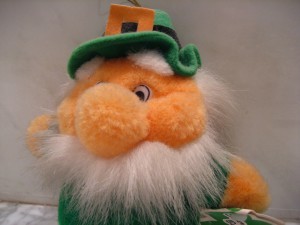The myth of leprechauns
 Guess who is clad in green, no taller than a child, loves shoes, and enjoys tricking people? No, it’s not the girl next door. It’s the Leprechaun. This Irish legend has a pot of gold hidden somewhere, and you get to own it if you can catch him. However, catching him is not as easy as it sounds. This devious creature would try just about anything to escape capture, and he has a load of tricks up his sleeves. So, ever wonder how the legend started? Let’s take a journey into the past.
Guess who is clad in green, no taller than a child, loves shoes, and enjoys tricking people? No, it’s not the girl next door. It’s the Leprechaun. This Irish legend has a pot of gold hidden somewhere, and you get to own it if you can catch him. However, catching him is not as easy as it sounds. This devious creature would try just about anything to escape capture, and he has a load of tricks up his sleeves. So, ever wonder how the legend started? Let’s take a journey into the past.
Uncovering the myth
The origins of leprechauns have been linked to the Tuatha Dé Danann of Irish mythology. They were said to be a cobblers who hide their pots of gold at the end of a rainbow. Some researchers suggest that the name “leprechaun” actually comes from the Irish term “leath bhrogan”, which means shoemaker.
According to others, the origins of the word “leprechaun” can be traced back to the 8th century tales of water spirits called “luchorpán”, which means small bodies. The earliest known story about these spirits was in the medieval tale known as the Echtra Fergus mac Léti (Adventure of Fergus son of Léti). In this tale, Fergus mac Léti, the King of Ulster, fell asleep on the beach and woke up to find that he had been dragged into the sea by three luchorpán. He managed to capture the creatures, and he was granted three wishes in exchange for their release.

Interesting facts
Did you know that leprechauns originally wore red, not green? That is because solitary fairies like leprechauns wore red, while trooping fairies wore green.
Like most fairies, leprechauns have a distinctive sound associated with them. These creatures are said to make a certain tapping sound, that of a tiny cobbler hammer driving nails into shoes, whenever one of them is near.
It seems quite ironic that leprechauns are often associated with wealth, particularly gold coins, when they are actually cobblers by trade.
Leprechauns seem to be entirely male and solitary. There is actually no record of any female leprechauns existing.
It is said that people lucky enough to capture a leprechaun can barter his freedom for three wishes.
Leprechauns are a morality tale figure. It actually warns against greed and the folly of trying to get rich quick.
From these stories, the leprechaun legend eventually evolved into the mischievous fairy we know today. Haunting cellars and drinking heavily, while playing tricks on the unwary.
Here is a fun fact. Did you know that leprechauns are actually protected under European Union law? Surprised? This is thanks to a group of lobbyists from Carlingford, Co. Louth, who managed to convince the EU that the Carlingford’s Sliabh Foy Loop trail, which is apparently the home of 236 Leprechauns, should be protected.
Sources
http://en.wikipedia.org/wiki/Leprechaun
http://www.celtic-weddingrings.com/myth-of-the-leprechaun.aspx
http://www.irishcentral.com/culture/entertainment/-top-ten-facts-about-leprechauns-and-where-the-legends-really-came-from-212728761-237598771.html
Photo Sources
Photo By Clyde Robinson via StockPholio.com
Photo By sunshinecity via StockPholio.com
The post The myth of leprechauns appeared first on Richard Ward Books.



